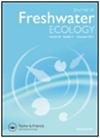磷在藻类生长中的意义以及消费者随后的生态反应
IF 1.4
4区 环境科学与生态学
Q3 ECOLOGY
引用次数: 12
摘要
摘要人类活动严重破坏了生态系统中的磷循环,影响了食物链上的生产者和消费者。为了评估不平衡磷对生产者的生态影响以及消费者对食品质量变化的反应,研究了磷浓度(HP、MP、LP)对斜栅藻的影响。为了研究磷水平对消费者进食行为和生活史策略的间接影响,将藻类喂给旋转轮状藻。结果表明,磷浓度显著增加了种群密度、环境容量、细胞大小、比生长速率、叶绿素a和叶绿素b。由于HP和MP培养基中产生的藻类的P细胞内浓度,藻类被分为两类食物质量(富含P和缺乏P)。轮虫喂食贫磷藻类后,其放牧率和过滤率显著提高。由于饮食中缺乏磷,轮虫延长了幼年期和繁殖期,从而延长了轮虫孵化时的寿命、世代时间和预期寿命。尽管轮虫的寿命比富磷组长,但以贫磷藻类为食的轮虫产生的后代要少得多,净繁殖率也明显较低,这与轮虫的生育期较长有关。根据研究结果,磷对藻类食物质量有重大影响,草食性消费者会受到藻类食物质量的显著变化的影响,他们会通过改变生活史策略和进食行为来应对这种变化。本文章由计算机程序翻译,如有差异,请以英文原文为准。
The significance of phosphorus in algae growth and the subsequent ecological response of consumers
Abstract Human activities have substantially disrupted phosphorus (P) cycles in the ecosystem, affecting producers and consumers along the food chain. To assess the ecological effects of imbalanced P on producers as well as consumer reactions to changes in food quality, the effects of P concentrations (HP, MP, LP) on Scenedesmus obliquus, were investigated. To investigate the indirect effects of P levels on consumer feeding behavior and life history strategies, the algae were fed to Rotaria rotatoria. The results showed that P concentrations increased population density, environment capacity, cell size, specific growth rate, chlorophyll a, and chlorophyll b substantially. As a result of the P intracellular concentration of algae produced in HP and MP media, the algae were classified as two categories of food quality (P-rich, P-poor). Rotifers' grazing and filtration rates were significantly increased when they were fed P-poor algae. In reaction to a lack of P in their diet, rotifers extended their juvenile and reproductive periods, resulting in a longer life span, generation time, and life expectancy at rotifer hatching. Despite living longer than P-rich groups, rotifers fed P-poor algae produced much fewer offspring and had a significantly lower net reproductive rate, which was linked to the rotifers' longer generation period. According to the findings, phosphorus has a major impact on algal food quality, and herbivorous consumers are subjected to significant food quality variation of algae, which they respond to by modifying their life history strategies and feeding behavior.
求助全文
通过发布文献求助,成功后即可免费获取论文全文。
去求助
来源期刊
CiteScore
2.20
自引率
7.70%
发文量
34
审稿时长
3 months
期刊介绍:
The Journal of Freshwater Ecology, published since 1981, is an open access peer-reviewed journal for the field of aquatic ecology of freshwater systems that is aimed at an international audience of researchers and professionals. Its coverage reflects the wide diversity of ecological subdisciplines and topics, including but not limited to physiological, population, community, and ecosystem ecology as well as biogeochemistry and ecohydrology of all types of freshwater systems including lentic, lotic, hyporheic and wetland systems. Studies that improve our understanding of anthropogenic impacts and changes to freshwater systems are also appropriate.

 求助内容:
求助内容: 应助结果提醒方式:
应助结果提醒方式:


